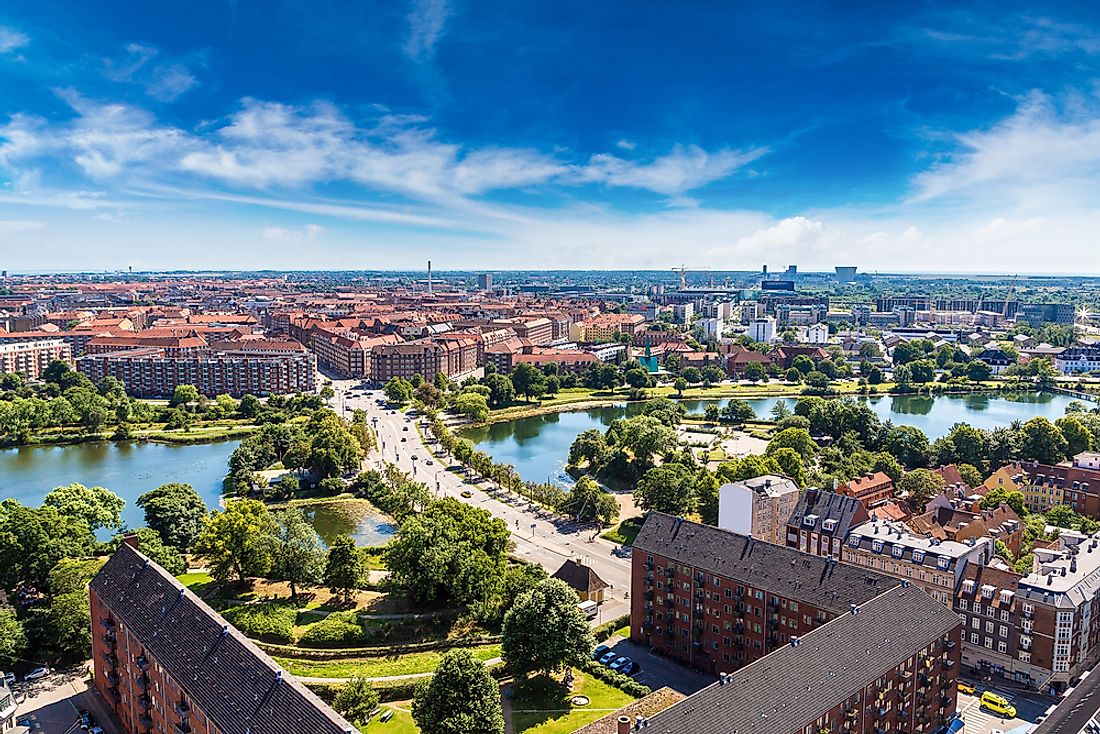What Is The Capital City Of Denmark?

Denmark is a small Scandinavian country located south of Norway, southwest of Sweden, and north of Germany. The country was established as a unified kingdom during the 10th century. Denmark is the smallest and the most southern of the Nordic countries and occupies an area of 16,573 square miles. Copenhagen is the capital city and the largest city of Denmark. Like the country of Denmark, the city was established during the 10th century and has grown in importance over the centuries.
Copenhagen
Copenhagen is the capital and largest city in Denmark with a municipal area of 33.36 square miles. Copenhagen is one of the most important cities in Denmark and its residents have been ranked as the happiest people in the world. Copenhagen is a culturally diverse city with people from all over the world choosing to live in the city. Copenhagen ranks third after London and Paris as the choice headquarters and distribution centers by regional organizations.
History
Copenhagen was established by the Vikings as a fishing town during the 10th century. The presence of a natural harbor and the availability of herring were the main influencing factors to its establishment. The expansion and growth of the town were directly linked to the increased fishing and trade of herring. Copenhagen became the capital of Denmark in the 15th century after the formation of the Kalmar Union. Subsequent centuries saw the growth of the city as a major hub for education, politics, commerce, and culture. Several important institutions were established including the University of Copenhagen. In the 18th century, the city saw damage from two major fire outbreaks and a plague which destroyed most of the existing buildings and took thousands of lives. Its neutrality in European wars made it an important trading center among states near the Baltic Sea. The 19th century was marked by the Danish Golden Age which saw massive growth in culture, art, and architecture. In the 20th century, Copenhagen served as an administrative and industrial center prospering economically during WWI due to its neutrality. Its involvement in WWII is linked to the occupation of German troops in the city in 1944.
Modern Role
Copenhagen grew remarkably during the second half of the 20th century and continues to grow today. Besides being the political and administrative capital of Denmark, Copenhagen plays other major roles such as education, commerce, residence, transport, and tourism. Copenhagen has one of Europe’s largest financial centers. Several universities such as the University of Copenhagen, the Technical University of Denmark, the Danish Academy of Fine Arts, and the Copenhagen Business schools are some of the top educational centers located in the city. Copenhagen is a major tourist destination that attracts visitors from all over the world to its unique attractions such as the Royal Danish Theatre, the Copenhagen Zoo, the Tivoli Gardens, the National Museum of Denmark, the Frederiksberg Palace, and the Copenhagen Jazz Festival.
Population
Copenhagen is the most populous city in Denmark with a municipality population of 601,448 people in 2016. The urban Copenhagen area has a population of 1,280,371 while that of the metropolitan area is 2,016,285 inhabitants. Most of the residents of Copenhagen are of Danish origin. Other residents in the city are from countries such as Pakistan, Morocco, Poland, Germany, Iraq, Turkey, Sweden, Norway, the UK, the US, Italy, and China.







